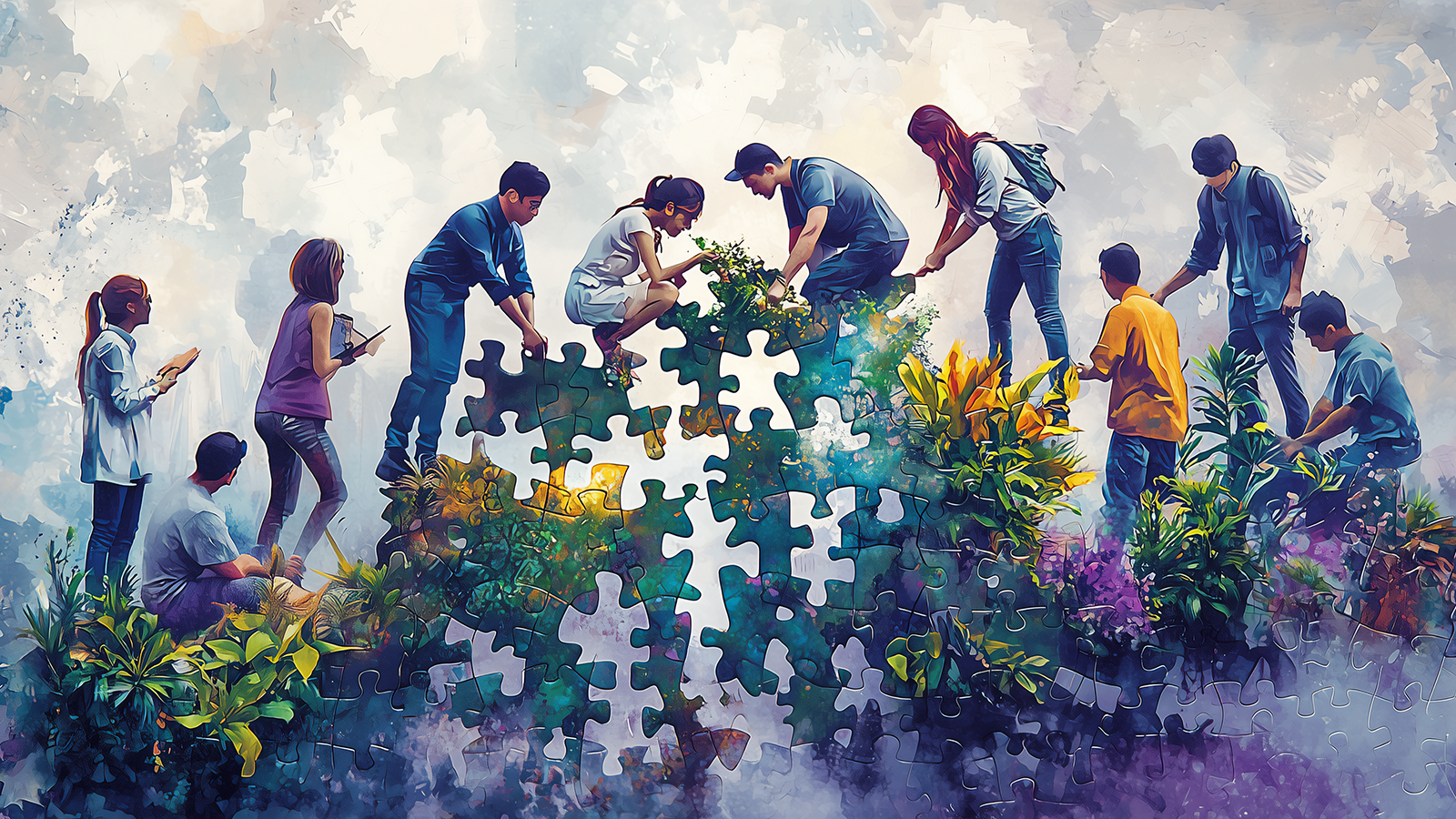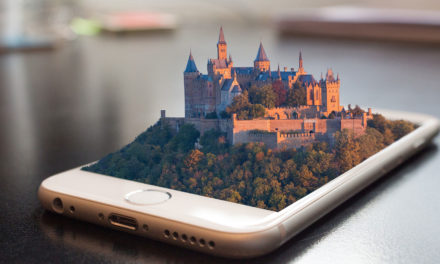Inhabitancy by Design for Place X

A New Era in the Creation of Spatial Experiences and Narratives
We live in an intricately interconnected world. A world where digital and physical, play and learning, working and dwelling increasingly interlace with the delicacy of a spider’s web, bringing about the next step in the evolution of how we conceive and design our spaces and places. This includes those forged from stone, those conjured from bytes, and those that exist somewhere in between. At the heart of this evolutionary pulse lies a profound exploration into spatial design and what it genuinely means to inhabit a space, opening an entrance to deeper connections and unique interactions: The audience-centric design principle of Inhabitancy, powerful enough to alter our perception of what audiences are.
The Four Places
Exploring Inhabitancy begins with returning to Ray Oldenburg’s “Third Places” considerations*. These are social niches distinct from home and work, fostering meaningful interactions. Building upon this concept, with the increase in prominence of virtual spaces, subsequent claims of the relevance and existence of a “Fourth Place” appeared, encompassing previous, present and future iterations of the metaverse and its peers. Fourth Places are those digital communities we are a part of or the platforms we depend on, facilitating human connection. The Fourth Place layers over the First, Second and Third place but still maintains its unique identity.
The Hybrid Place
We have already entered the era of hybrid theory and design, which, in essence, is the convergence of existing ideas and disciplines to form new concepts. Here, the physical and virtual blend into concepts such as the “physigal” territory. However, this is only part of a realm where the conventional separation of principles of work, play, and learning dissolve, inviting us towards multidimensional, immersive, engaging experiences that sometimes even hold the key to the transformation of ourselves or the world that surrounds us. Simply naming this iteration the Fifth Place does not seem prudent, as it exists in multiple places or planes with purpose and function in constant flux. Fluid as this place is, in name and meaning, it is the Xth Place or the less alienesque Place X.
Simply naming this iteration the Fifth Place does not seem prudent, as it exists in multiple places or planes with purpose and function in constant flux.
The Visitor, The User and The Inhabitant
When navigating deeper into the mindset that makes up the fabric of Place X, a trio of defining spatial arch identities appear The Visitor, The User, and The Inhabitant. Each adds colour and texture to the understanding of space interaction and influence as they enter the space and the subsequent various levels of engagement.
The Visitor is an explorer, momentarily balancing their available time with their level of engagement in an inherently passing mode. The User purposefully engages with the space, using it to achieve an outcome. Think libraries for knowledge seekers or theatres for culture connoisseurs. Above all is The Inhabitant. Where The User is often given the gift of agency, The Inhabitant is given even more: The power of ownership, even if temporary. The Inhabitant is a person in sync with the space, permeating it with their presence and essence, leaving enduring traces whether said traces are identifiable alterations or additions or the narratives that add heart to the memory and meaning of a space.
The identities of The Visitor, The User, and the Inhabitant are fluid, interconnected, and expandable stages rather than rigid roles. There is an intriguing transformation from Visitor to User and ultimately to Inhabitant. Within this metamorphosis, we find themes of connection, usefulness, personal resonance, and the flow of occurrences between The Inhabitants and their habitat that becomes an ever-evolving language of belonging.
The Evolution of New Habitats
The task for the designers of these spaces and the experiences is to reimagine how engagement occurs. Instead of perceiving those who enter spaces as transient figures, the challenge and opportunity is seeing them as actual inhabitants. This shift opens future avenues: Video games where players influence vast online worlds, offices balancing creativity and teamwork with dwelling spaces and personal preferences, museums becoming personal guides to history, and shopping venues transforming into community hubs. What is the ultimate role of the spatial experience designer in such scenarios? To infuse essence into these territories and contribute to their stories beyond the timeframe of design and construction and the opening. Spatial narratives come alive when spaces become inhabited, meaning the story begins at openings and launches. Everything leading up to this point is, in essence, preparations to make the framework for a living narrative to grow and thrive.
The task for the designers of these spaces and the experiences is to reimagine how engagement occurs. Instead of perceiving those who enter spaces as transient figures, the challenge and opportunity is seeing them as actual inhabitants.
When considering the potentials of these evolving landscapes of space and place and their inhabitants, imagine a new tableau where engagement with space evolves beyond mere occupation or function, weaving us into the fabric of every environment we encounter. Such scenarios may include, but are not limited to:
- Attractions: Entertainment spaces evolve into arenas where tales are not merely told but lived, told and retold. The guest becomes the protagonist and is integral to the narrative fabric. Every choice and action tints the tale with unique hues, making each experience profoundly personal yet universally resonant.
- Cultural Heritage: Museums, the treasure chests containing our collective narrative, transform into portals to our past, enabling individual curiosity and discovery. Each artefact, relic, historical fact, and story arc becomes a nexus of interaction and influence, inviting us to traverse time, unravelling the tapestry of history and human endeavour with a personal touch.
- Gaming: In these envisioned realms, gaming transcends the superficial bounds of leisure to manifest as digital and hybrid ecosystems. Within these realms, each player becomes a vital architect of worlds, scripting sagas not in fleeting moments but in enduring bytes, crafting mythos that resonate in the virtual cosmos and beyond.
- Hospitality: Hotels, those waypoints on our journeys, assume new roles. They will go far beyond mere stops but chapters in the odysseys of our lives, becoming habitats enriched with narrative to and from the modern voyager, turning transient stays into personal testimonials of travel and transformation.
- Retail: Shopping metamorphoses from transaction to interaction, with each purchase a narrative capable of weaving the individual into the social tapestry in which the retailer has a role to claim. Every item holds a story, and each exchange is part of personal discoveries and social – and socially responsible – shopping.
- Work: Workspaces are reimagined as hubs of social interaction and creative achievements, where the fusion of individual flair and collective endeavour move innovative mindsets forward. Here, a renaissance of productivity can grow and occur because productivity is balanced with the need for spaces for dwelling and deep work, along with the acknowledgement that not every outstanding achievement has to happen within the walls of the workspace. The future of the workspaces is, in astoundingly many cases, hybrid. However, that does not mean the employee should give up their working habitat or making their marks of individualisation. There should still be room for the family visuals, that lucky dinosaur figurine or whatever makes the space their place and habitat, even if shared.
Architects of the Future of Spaces and Places
At the heart of it all lies the capability to transform a space into a place rich in depth and engagement by placing the Inhabitant at its centre point at an early stage of its physical, virtual or hybrid formation. Technological prowess or structural elegance may enhance these innovative spaces, but the key to unlocking their potential is the depth of connections facilitated. Real success is in the human experiences they nourish and the lasting narratives they weave.
For creators and designers of spatial experiences and narratives, this is a unique moment in time to become architects of the future of their disciplines. To take on that role and responsibility, adopting a new mindset encompassing the evolving evolution of taking a step beyond current concepts of spaces and audiences and beginning to consider Inhabitancy – The Inhabitants and their habitats – is a critical and momentous step forward.
* Ray Oldenburg, PhD (2002): “Celebrating the Third Place: Inspiring Stories About the “Great Good Places” at the Heart of Our Communities, Da Capo Press.
Explored and elaborated by Christian Mikunda in his 2006 book “Brand Lands, Hot Spots, Cool Spaces: Welcome to the Third Place and the Total Marketing Experience”, Kogan Page Business Books.
Article illustration © 2024 AdventureLAB (Produced with a design toolbox including Midjourney and Adobe Creative Suite)
Besides being the Founder of AdventureLAB and the author of “Integrated Storytelling by Design”, Klaus Sommer Paulsen is an Associate Professor with VIA Film & Transmedia and Course Director of the new international programme Film and Transmedia Storytelling with Generative AI: https://en.via.dk/programmes/exchange/film-ai and the Course Director and Instructor of AdventureLAB Academy’s new online course AI Strategies for Story Experience Design: https://www.adventurelabstudio.com/ai-strategies-for-story-experience-design/




